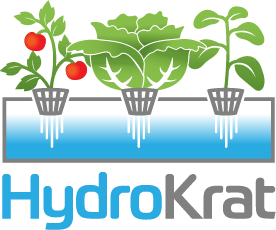Hydroponic gardening offers numerous advantages, from faster growth rates to greater control over environmental conditions. However, one aspect that hydroponic growers need to consider carefully is pollination. In hydroponic systems, plants are typically grown in a controlled environment, which means pollinators like bees and wind may not be readily available. In this article, we will explore the importance of pollination in hydroponic gardening and provide tips on how to ensure successful pollination in your indoor garden.
The Role of Pollination in Hydroponics In traditional soil-based gardening, pollination occurs naturally as bees, butterflies, and other insects visit plants to transfer pollen between flowers. In hydroponics, where plants are grown in a soilless medium, this natural pollination process may not occur, depending on the setup. Some hydroponic systems, like deep water culture or nutrient film technique, are entirely closed environments, making it impossible for outside pollinators to access the plants.
Methods of Pollination in Hydroponic Systems To overcome the lack of natural pollinators, like honeybees and other insects, hydroponic growers can use various methods to facilitate pollination. Here are some common techniques:
- Hand Pollination: This involves manually transferring pollen from the male flower to the female flower using a small brush or cotton swab. It’s a precise but effective method commonly used for plants like tomatoes and peppers.
- Mechanical Pollination: Some hydroponic setups incorporate mechanical devices, such as vibrating tools, to simulate the vibrations caused by bees. These vibrations shake the pollen loose and facilitate pollination.
- Air Circulation: Adequate air circulation within your hydroponic space can help disperse pollen throughout the area. Fans or oscillating tools can assist in distributing pollen and improving pollination rates.
Choosing the Right Plants for Hydroponic Pollination Not all plants require the same level of attention when it comes to pollination in hydroponic systems. Some plants are self-pollinating, while others are wind-pollinated. Here’s a brief overview:
- Self-Pollinating Plants: Some plants, like lettuce and beans, have flowers that are capable of self-pollination. In such cases, you may not need to intervene in the pollination process.
- Wind-Pollinated Plants: Plants like corn and wheat rely on wind for pollination. In hydroponic environments, you can aid wind pollination by ensuring proper air circulation.
- Insect-Pollinated Plants: Crops like cucumbers and strawberries require the most attention in hydroponic systems. Hand or mechanical pollination is often necessary for these plants to ensure fruit development.
Tips for Successful Hydroponic Pollination To achieve successful pollination in your hydroponic garden, consider the following tips:
- Observe Plant Behavior: Pay close attention to your plants’ flowering behavior. This will help you determine when and how to pollinate.
- Timing is Key: Pollinate your plants during their active flowering period when the flowers are fully open and receptive to pollen.
- Use the Right Tools: When hand-pollinating, use appropriate tools like brushes or cotton swabs. Ensure they are clean and free of contaminants.
- Maintain Optimal Conditions: Proper lighting, temperature, and humidity levels can influence flower production and pollination success.
- Monitor for Pests: Keep an eye out for pests that may hinder the pollination process. Address pest issues promptly.
- Record Keeping: Maintain a record of your pollination efforts and their outcomes to refine your approach over time.
In conclusion, pollination in a hydroponic space is a critical aspect of successful plant propagation. While hydroponic systems offer many advantages, ensuring effective pollination requires careful attention and, in some cases, manual intervention. By understanding your plants’ pollination needs and implementing the appropriate techniques, you can enjoy healthy and productive harvests in your indoor garden.


Recent Comments